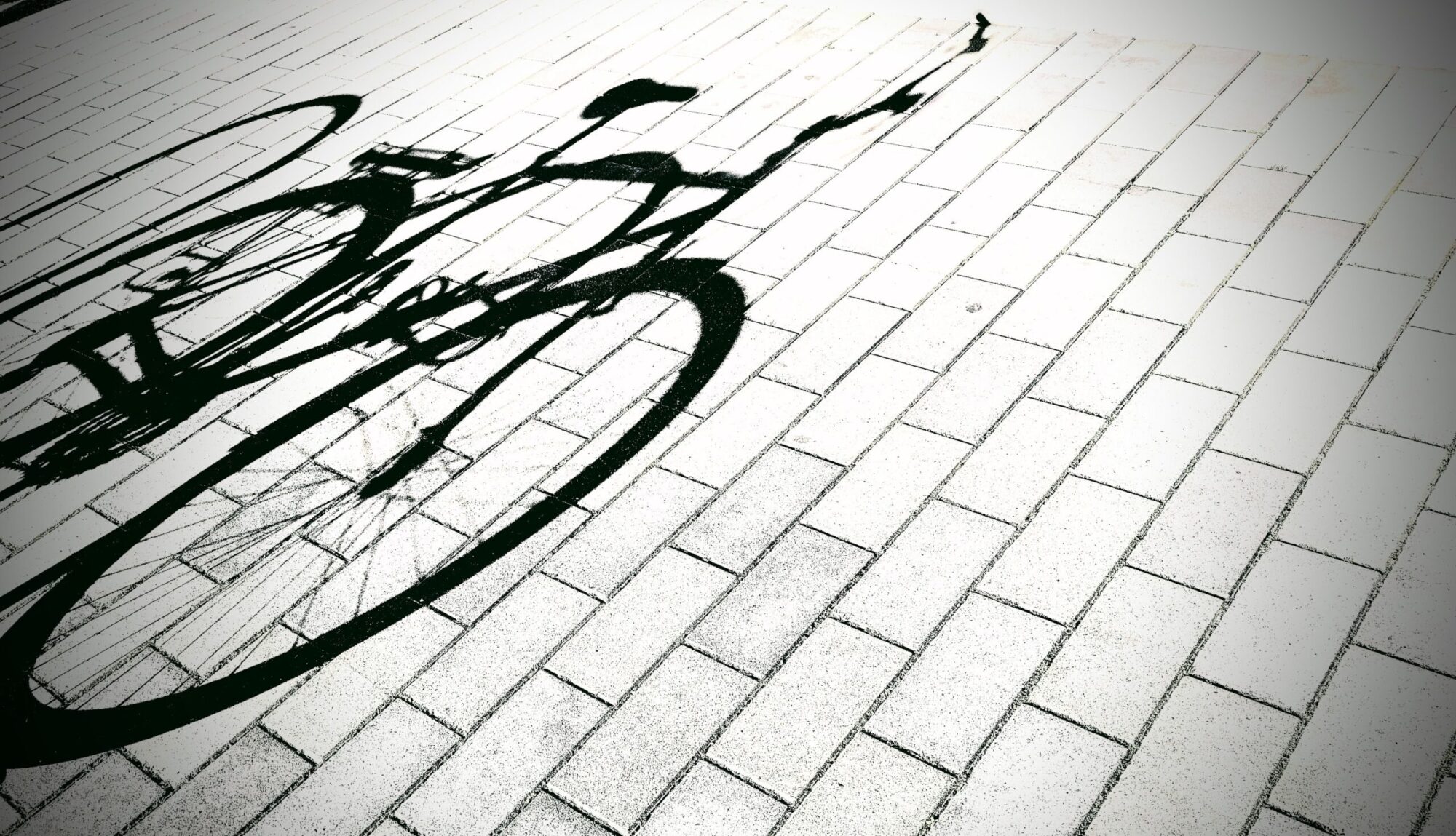1. Visual Analysis
This photograph is an elegant play of light, shadow, and geometry, where the stark black bicycle shadow intersects with the clean, repetitive patterns of paved tiles. The absence of the actual bicycle amplifies the sense of ephemerality and abstraction.
- Light and Shadow:
- The sharply defined shadow of the bicycle contrasts dramatically against the pale, light-toned tiles, enhancing visual tension. The angle of light creates elongated, stretched shadows, suggesting a low sun position—possibly early morning or late afternoon.
- The curvature of the bicycle wheels and frame contrasts beautifully with the grid-like, linear geometry of the pavement.
- Composition:
- The image is dominated by diagonal lines, guiding the viewer’s eye across the frame, from the bottom left to the top right, where the shadow fades into light.
- The negative space in the upper portion of the image enhances the minimalist quality and draws focus to the shadow, which becomes the de facto subject.
- Texture and Tonality:
- The tiles’ subtle texture adds depth and detail, while the monochromatic palette (black, gray, and white) simplifies the composition into a study of form and contrast.
- The shadow itself has a grainy quality, hinting at either the texture of the tiles or post-processing that accentuates the graphic nature of the image.
2. Symbolic and Reflective Analysis
The photograph evokes themes of impermanence, memory, and the intangible nature of time.
- Absence and Presence:
- While the bicycle itself is missing, its shadow remains—a ghostly remnant of its presence. This juxtaposition can symbolize the ephemeral nature of moments: what was there, and what remains.
- The shadow becomes a stand-in for the physical object, inviting viewers to imagine the unseen.
- The Journey:
- Bicycles often symbolize travel, movement, and progress. Yet here, the shadow seems frozen in time, as though the rider has disappeared, leaving only a memory of the motion.
- This frozen moment invites contemplation of life’s fleeting nature—of shadows cast by things that come and go.
- Minimalism and Focus:
- The photograph strips away distractions, leaving only light, shadow, and form. It challenges viewers to find beauty in simplicity and to look closer at the overlooked details in everyday life.
3. Practical Photography Insights
This image demonstrates mastery of shadow play and minimal composition.
- Angle of Light:
- Capturing long, defined shadows requires careful observation of light angles, usually when the sun is low in the sky.
- The photographer likely adjusted perspective to ensure the shadow stretched diagonally, enhancing dynamic flow.
- Focus on Shapes:
- The subject is not the physical bicycle but its shape—a creative exploration of abstraction. Shooting shadows transforms ordinary scenes into graphic art.
- Minimalist Composition:
- Less is more. The clean, empty pavement allows the shadow to take center stage, while diagonal lines add movement and energy to the frame.
- Contrast Enhancement:
- Post-processing may have been used to enhance the tonal contrast, emphasizing the starkness of the shadow against the pale tiles.
4. Reflections
This photograph transforms the familiar into the extraordinary. A shadow—so intangible, so fleeting—becomes the protagonist in a minimalist story of light and motion. It invites the viewer to pause, observe, and find meaning in absence.

